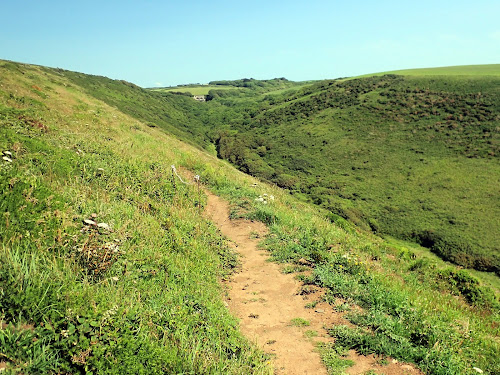But, half of the transect is along a delightful stream running through a maturely wooded valley.
 |
| Tidna Valley main part of the transect |
The temperature in the shade of the trees was much more reasonable. Having seen a Meadow Brown on the first of the ten sections, I dared to anticipate a full house (https://www.blogger.com/blog/post/edit/2530752943335211299/3755956790555006431 ) that is, recording butterflies on every one of the ten sections. Meadow Brown and Speckled Wood were common under the trees particulalry where the canopy is open allowing brambles to flourish and produce flowers attractive to all insects.
It was in one of these sunlit open areas that a New For Year (NFY) Silver-washed Fritillary appeared on section three.
 |
| Silver-washed Fritillary |
Where the route emerges from the tree cover, at section six, it is more open with steep sided slopes covered in Gorse either side of a more open scrubby pathway. It is here that the Large Blue Butterfly became extinct in Cornwall in 1979. Despite efforts to reintroduce it, the ecology is still not yet suitable. However Skippers and Small Heaths did appear here as well as Small Pearl-bordered Fritillaries in season. And it is here where another two more NFY appeared, a Small Skipper and a Ringlet.
 |
| Small Skipper |
 |
| Ringlet |
The best was yet to come. Further along this valley, within sight of the Atlantic Ocean I spotted a large, dirty white flying insect. I could not be sure if it was moth or butterfly, but the blurred, dirty white was similar to the colour moths present as they flap their wings. However as it came nearer, it was apparent that it was a large black and white butterfly. I could see that the black and white were in distinct panes not unlike a mock Tudor, half-timbered building - it was a Marbled White. So, not only NFY, but also new to this site and an uncommon species in North Cornwall VC2.
I couldn't beat that, but did manage to complete the "full house" with a least one butterfly in each of the ten sections. It was not the highest number seen so far this year, but 64 butterflies of ten species with four NFY and one new for the site was very satisfying.







